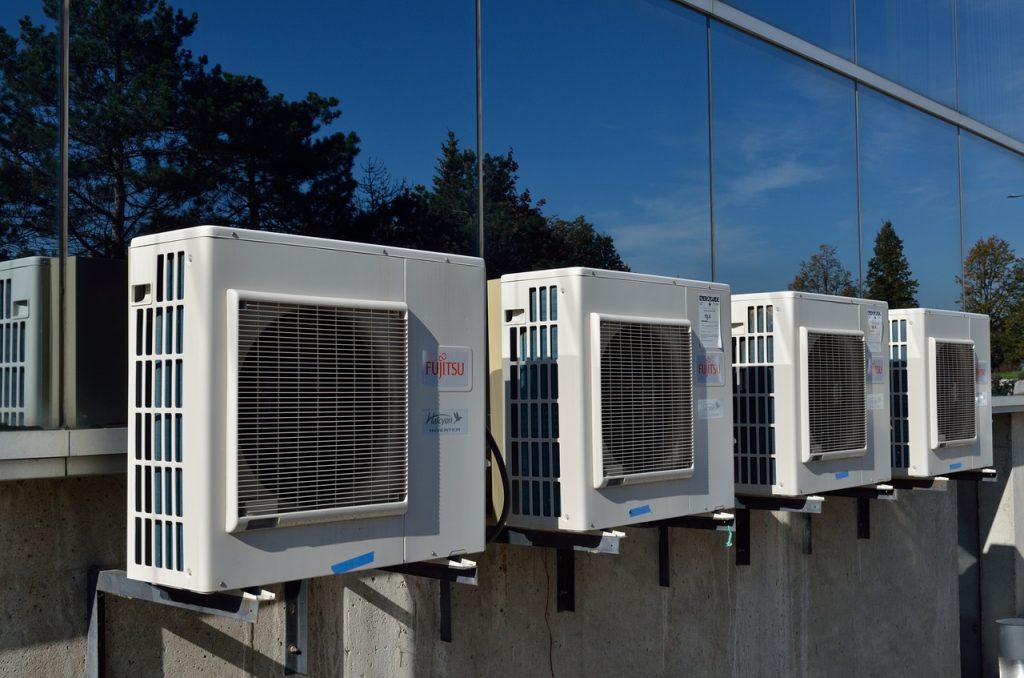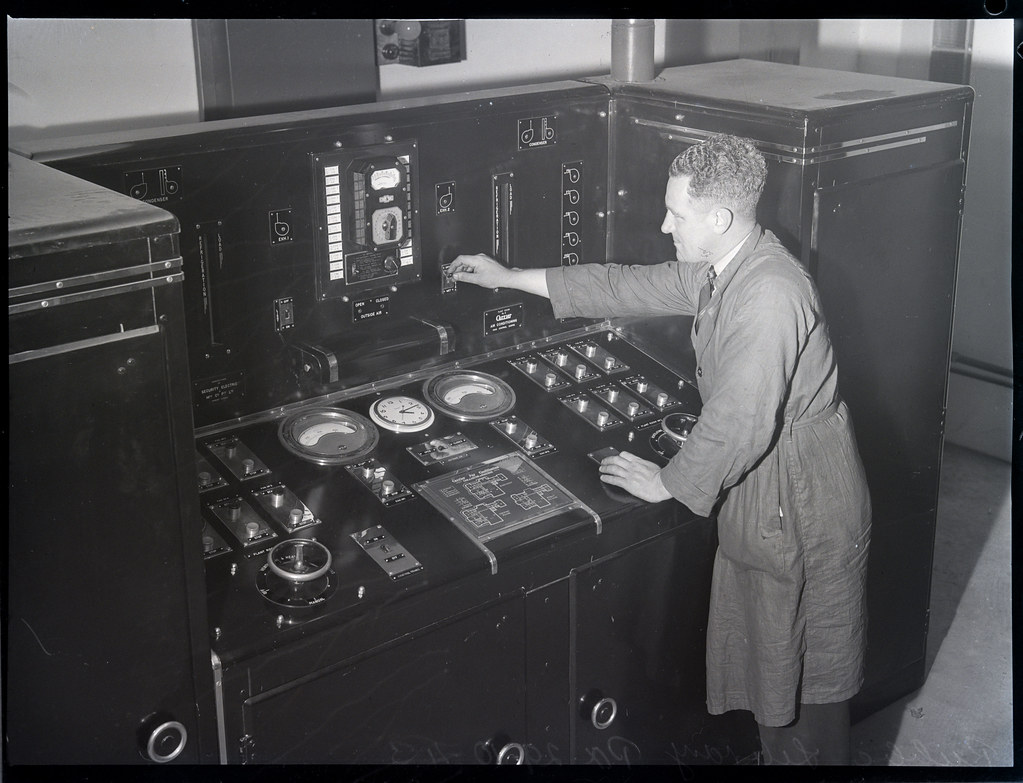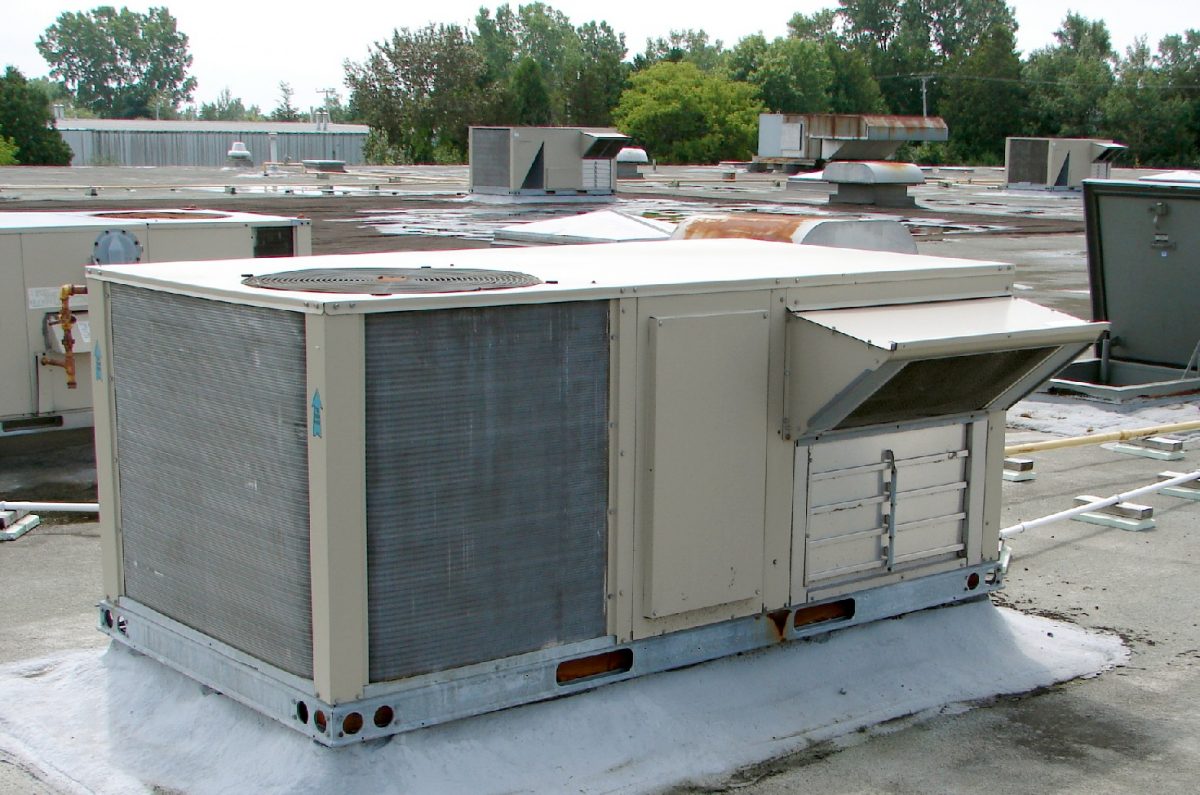As temperatures begin creeping up all around the country, summer’s swelter will mercifully be kept at bay by most people running their air conditioning. This technology has had a profoundly comforting impact on modern life, and most, if not all, American homes these days have some form of air conditioning.
So how does a typical air conditioning unit work and keep you sane during the heat of summer? The basic concept is that a chemical called refrigerant loops from inside the home to outside and back again, absorbing and casting out heat in the process. The refrigerant cools and then re-enters the home, starting the cycle anew. The two refrigerants most commonly used in residential air conditioners are R-22 and the newer R-410A, both of which are chemically known as hydrochlorofluorocarbons, or HCFCs. These chemicals go back and forth from a liquid to a gaseous state very easily, and it is these so-called phase transitions that make HCFCs so useful as refrigerants.
A common phase transition we’ve all seen is when liquid water is heated and evaporates into a gas, or water vapor. The same goes for the refrigerant: it absorbs heat in its liquid state, transforming into a gas. The refrigerant is then forced to return to being a liquid, expelling the heat it absorbed and thus made ready to soak up heat once again.

A Breakdown of the Air Conditioning Unit
An air conditioning system essentially has four parts: an evaporator, a compressor, a condenser and an expansion device.
The part inside the home where the refrigerant evaporates is the evaporator, naturally. Fans in the home blow air across the evaporator’s coils. As air from the house moves across the evaporator, refrigerant within the coil picks up the temperature of the air. The refrigerant absorbs heat from the air and turns from a liquid to a vapor. It goes from being a cold liquid to a hotter vapor, and at the same time, the air has had heat removed from it, so the air goes from being warmer to cooler.
The vaporized refrigerant then passes into the compressor, which is located outside in the air conditioning unit adjacent to a home (or often on the roof of a business), along with the condenser. As the name implies, the compressor compresses the gas to a state of higher pressure and higher temperature. From there, the hot, pressurized gas flows over the third component, the condenser. Here, the gas is condensed back into its liquid state as heat is radiated away. Outdoor units often have metal fins on them to help dissipate the heat more quickly.
The cooled-off liquid is now returned into the home. The expansion device regulates the flow of liquid refrigerant into the evaporator, where just as before it will absorb heat and change phase from a liquid into a low-pressure gas.
Moisture trap
Removing heat is not all that an air conditioner does as it, ahem, conditions the air. Humidity — the amount of water vapor in the air — is a major factor in how our bodies feel the heat; a more humid environment prevents sweat from evaporating off the skin, which helps to whisk away unwanted bodily warmth. So, in order to render the environment inside a home or business more comfortable, air conditioners also dehumidify.
As the air moves across the evaporator coil, the coil absorbs heat and also wrings out moisture. The air now has a cooler temperature and is drier, so when it comes out of the vents, it mixes with room air and makes the room more comfortable. All that water leached out of the air by air conditioners can pool in or drain out of the unit, especially on humid days.
The modern air conditioning unit came about with the goal of humidity control. In 1902, engineer Willis Carrier drew up a method to remove irksome humidity from the air at a printing company in Brooklyn, N.Y.

What About the Environmental Impact?
Environmentalists say we should use less air-conditioning, which sounds easier than it is in a really hot climate. It’s important to remember that air-conditioning isn’t just about luxury or comfort: an air-conditioned room can make you much more productive at work and it can have important health benefits too.
Love it or loathe it, we won’t be getting rid of our air conditioners anytime soon; in the United States, for example, all the trends are pointing the other way. According to a survey by the US Energy Information Administration (EIA), 87 percent of US households now have air conditioning, with a dramatic increase in every region of the country since 1980. Make sure you’re prepared for the coming heatwaves by contacting reputable HVAC maintenance companies like Beato Fuel Corp to schedule a system check.

